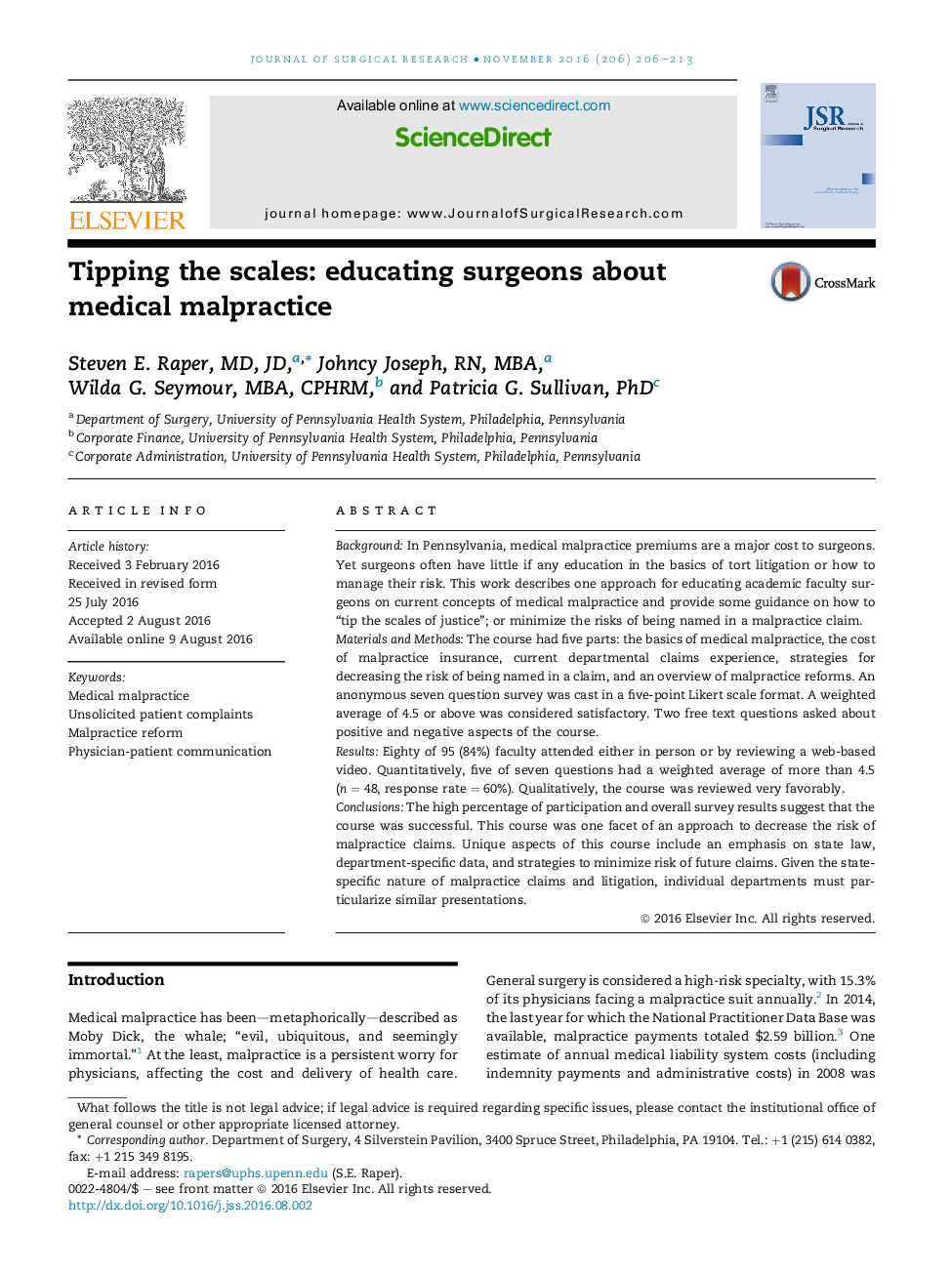| Article ID | Journal | Published Year | Pages | File Type |
|---|---|---|---|---|
| 4299097 | Journal of Surgical Research | 2016 | 8 Pages |
BackgroundIn Pennsylvania, medical malpractice premiums are a major cost to surgeons. Yet surgeons often have little if any education in the basics of tort litigation or how to manage their risk. This work describes one approach for educating academic faculty surgeons on current concepts of medical malpractice and provide some guidance on how to “tip the scales of justice”; or minimize the risks of being named in a malpractice claim.Materials and MethodsThe course had five parts: the basics of medical malpractice, the cost of malpractice insurance, current departmental claims experience, strategies for decreasing the risk of being named in a claim, and an overview of malpractice reforms. An anonymous seven question survey was cast in a five-point Likert scale format. A weighted average of 4.5 or above was considered satisfactory. Two free text questions asked about positive and negative aspects of the course.ResultsEighty of 95 (84%) faculty attended either in person or by reviewing a web-based video. Quantitatively, five of seven questions had a weighted average of more than 4.5 (n = 48, response rate = 60%). Qualitatively, the course was reviewed very favorably.ConclusionsThe high percentage of participation and overall survey results suggest that the course was successful. This course was one facet of an approach to decrease the risk of malpractice claims. Unique aspects of this course include an emphasis on state law, department-specific data, and strategies to minimize risk of future claims. Given the state-specific nature of malpractice claims and litigation, individual departments must particularize similar presentations.
